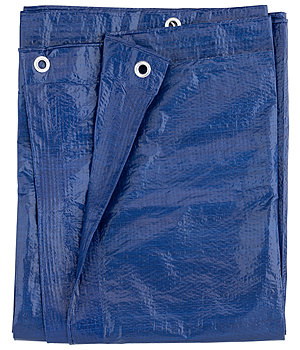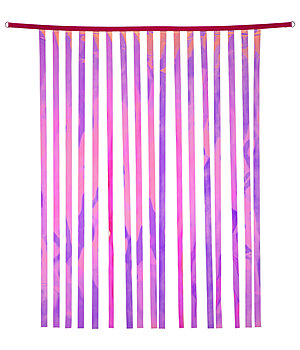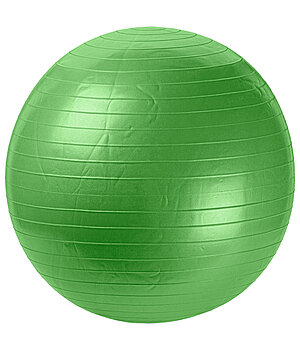What are the different types of groundwork?
From everyday handling of the horse to specific training sessions in the riding arena – groundwork is important for horse and rider. If you want to teach your horse more than just the general rules of behaviour when leading, these days you have a variety of training methods from the ground that can be tried out with the horse.

In classical riding training, lunging is an integral part of the horse’s gymnastics from the ground. Here, the horse is moved in a circle on a lunge. For some decades now, Natural Horsemanship has also become increasingly popular, often associated with the modern „horse whisperers“ Ray Hunt, Monty Roberts, Pat Parelli and Buck Brannaman.
In our guide, we present an overview of the most popular training methods. You can find more information in the topic guides:

2.1. Lungeing
Working with lungeing reins is an important part of the training of horse and rider. The horse must learn to work on the lunge just as the rider must learn the techniques. The aim is not only to let the horse walk and move on the lunge, but also to gymnastically train the horse in a targeted way. Lungeing has also proven to be a good first training step when working with young horses. In this way, they can be gently accustomed to dealing with people and learn – initially without saddle and rider’s weight – the basics of the training scale as well as the first lessons. In addition, the horse can also focus on understanding and accepting aids, which can then also be extended from the saddle.
Goals:
- Gymnastics
- Balance
- Preparation for riding
- Horse training scale
Equipment:
- Lunge or double lunge
- Bridle or cavesson
- Lunging whip
- Auxiliary reins
- Lungeing harness
Suitable for:
- All horses
- Especially young horses in training
- Horses in muscle development
- Tense horses
- Horse and rider who want to work on the developmental aspects
In the lungeing guide you will find more information on the basics of lunge work. We advise you on how to put together your lunge equipment and help you with the first steps of lunge work.
2.2. Horsemanship
Horsemanship should be understood less as a training method and more as a way of thinking about interacting with the horse. Basically, it refers to interacting with the horse in a way that is gentle to the horse and based on trust. A horseman is a horse person who orients themselves to the needs of the horse and takes these into account at all times in their daily handling and work – both from the ground and in the saddle. In order to establish this trusting connection, work from the ground has become established. The term „horsemanship“ originates from the USA and has also made a name for itself worldwide through some famous „horsemen“ such as Ray Hunt, Monty Roberts or Pat Parelli. Many of the great personalities of horsemanship come from western riding, as their riding origins go back to ranch work. The harmonious cooperation of horse and rider is actually the ideal in every equestrian discipline. Followers of English riding are now also interested in horsemanship and consciously use such training as a change in the training schedule and as a broadening of the rider’s horizons.

Goals:
- Promoting the relationship between rider and horse
- Mutual trust
- Learning to understand the horse
- Improving body language
- Learning to treat the horse correctly
Equipment:
- Rope Halter
- Rope
- Neck ring
- Horsemanship Stick
Suitable for:
- Horse and rider who want to work on trust
- All riders who want to understand horse behaviour better and deal with it more consciously
- Horses with difficult behaviour
In the Horsemanship Guide you will find more information about the basics of horsemanship. We explain which accessories you need for this and which first exercises are suitable to get to know horsemanship better.

2.3. Dual activation
Dual activation was developed by Michael Geitner, who grew up on one of the first western ranches in Germany. Dual activation works with visual stimuli with blue and yellow equipment, such as the dual alleys. It has been scientifically proven that horses perceive the colours blue and yellow particularly well, other colours tend to be in grey shades. With the help of the dual alleys, a course is set up that is mastered from the ground or on horseback. The differently coloured dual alleys give the horse orientation and thus also train balance, coordination and concentration. In addition to dual activation, Michael Geitner has also developed other training systems, such as equikinetic or equiplace training, which can be used as an addition to dual activation.
Goal:
- Improvement of balance
- Activation of the hindquarters
- Better coordination
- Work on confidence
Equipment:
- Dual alleys
- Dual activation cones
- Activation flag
- Cavesson
Suitable for:
- Horse and riders who want to strengthen the team spirit
- Horses in need of exercise and muscle development
- Horses that have problems with balance and coordination
- Riders who want to bring more structure into training
In the detailed guide to Michael Geitner’s dual activation, we will introduce the concept in more detail and help you choose the right equipment for dual activation.
2.4. Monty Roberts
Monty Roberts is one of the best-known horse whisperers in the world. He grew up as the son of a horse trainer in California on a ranch with wild mustangs. His father behaved violently towards him and also towards the horses. These circumstances and his gift for observing the instinctive behaviour and language of horses inspired him to find a non-violent and natural way of dealing with horses. His Join-Up method captures the natural behaviours of horses and teaches humans to adopt the horses‘ vision and language. Join-Up is classically performed in a roundpen. „Join-Up“, according to Monty Roberts, can be loosely translated as „to volunteer“. Since the horse, as a herd animal, has a natural need to join a community, this should also be possible between humans and horses.

Goal:
- Strengthen trust between human and horse
- Using the language of horses for communication between horse and human being
- Taming without violence and overcoming difficult behaviour
Equipment:
- Monty Roberts Dually Halter
- Lead Line
Suitable for:
- Riders who want to work on confidence
- Young horses
- Horses with difficult behaviour
Read more about the Join-Up method in the Monty Roberts guide. We will also go into more detail about the Monty Roberts accessories.

2.5. Horse Walking
Horse Walking is one of the newer concepts that have emerged in the field of groundwork in recent years. It is intended to bring fun and variety into groundwork with the horse and represents a real alternative to training in the saddle for many people who consciously avoid riding or cannot ride for health reasons. Horse Walking can be used practically anywhere – whether in the riding arena, in the countryside or on a trail course. The basic idea of horse walking is to promote non-verbal communication between horse and human and thus to achieve a respectful and trust-based togetherness. Clear signals are intended to make the joint activities more harmonious so that horse and rider can work together in a fear-free, concentrated and motivated manner.
Goal:
- Fun and varied activities with the horse
- Improvement of body language
- Improving the relationship between human and horse
- To improve the condition of the rider
- Horse training
- Promotes attention and concentration of horse and human
Equipment:
- Rope halter or cavesson
- Lead rope
- Aids: long whip, (driving) whip
Suitable for:
- People interested in horses who do not want to ride
- Horses that cannot be ridden for health reasons
- Young horses
- Fussy horses
- Timid horse and rider
You can find more information about the Horse Walking concept in our guide.
2.6. Composure training
Horses have a strong instinct to flee and for this reason they react very nervously to danger. The horse’s sensory organs are an ideal early warning system – the eyes, for example, are located on the side of the head so that the horse has an almost all-round view. The sense of smell and the sense of hearing are also highly developed. The sharper the senses of a living creature, the more sensitive they are in their behaviour. A loud bang, a falling branch, the smell of something burning… these are all sensory stimuli that can put the horse into emergency mode. The result: the flight instinct and the instinct for self-preservation kick in, the horse spooks, runs away or starts to rear or kick.
Through regular calmness training – also called spook training or anti-spook training – horses can be gently introduced to unfamiliar situations. An important prerequisite here is that the rider himself „stays calm“, investigates the objects together with the horse and allows the horse the time it needs to deal calmly with the new situation.

Goal:
- Promoting trust between horse and rider
- Overcoming fear
- Preparation for unfamiliar situations
- Reducing of the risk of accidents
Equipment:
- Flutter curtain
- Ball curtain
- Curtain
- Balloons
- Umbrella
- Flags
- Rattles
- Obstacles (gates, horse trailers, water ditches)
- And other objects
Suitable for:
- Timid horses
- Insecure riders
- Horse and riders who want to promote mutual trust
You can find detailed tips and inspiration for calmness training in the guidebook.





